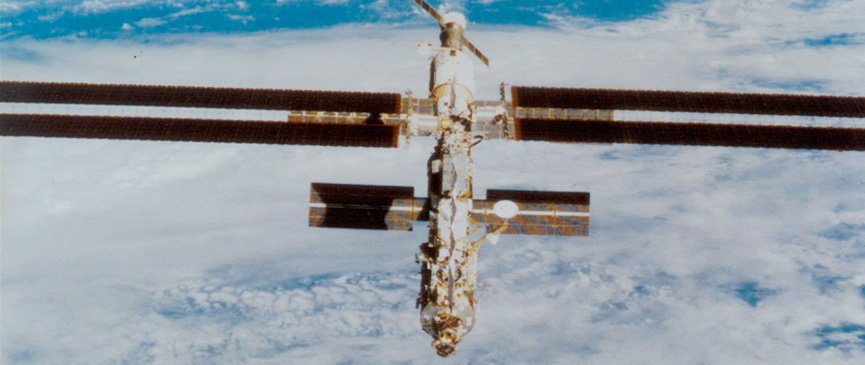The Princess of Asturias Foundation
Sección de idiomas
Fin de la sección de idiomas
Sección de utilidades
Fin de la sección de utilidades
- The Foundation
- HM The King
- HRH The Princess of Asturias
- 2023 Special
- Princess of Asturias Awards
- Area of Communication and Media
- Music Department
- Exemplary Town of Asturias Award
- 2012 Special
- 2013 Special
- 2014 Special
- 2015 Special
- 2016 Special
- 2017 Special
- 2018 Special
- 2019 Special
- 2020 Special
- 2021 Special
- 2022 Special
-
Important: COVID-19
-
Terms of Use
You are in:
Laureates
Start of main content
International Space Station
Prince of Asturias Award for International Cooperation 2001

The International Space Station may well be mankind's most important step towards conquering Space and a milestone for scientific research beyond the Earth. It is also a symbol of the potential for mankind's future of technological development, scientific breakthrough, and peaceful cooperation amongst nations. It is the first major international space and engineering research project and involves five Space Agencies -the U.S.A's NASA), Russia's (RSA), Europe's (ESA) Japan's (JAXA) and Canada's (CSA)- and a score of countries - Spain being one of them - who supply parts and technology. The aim of this project is to set up a laboratory that orbits the earth so that the world's scientists, astronauts and cosmonauts can work together on experiments intended to contribute to man's progress that cannot be carried out on Earth. It is also the first space station born of cooperation between countries - the preceding seven were all funded in their entirety by either the United States or the Soviet Union - for the benefit of the whole planet.
The nomination pointed out that this adventure 'has already contributed, and will continue to do so, in an exemplary and practical fashion, to progress and fraternity amongst nations ... fulfilling the principles laid down in the 1967 Treaty for Space to explore and exploit outer space for the benefit of all mankind and for international cooperation in all scientific work that is carried out.' A hallmark of the future, says the nomination, 'is the need for our civilisation to embark on many major projects by applying extensive international cooperation to confront the uncertainties of the future', and it considers the ISS to be 'the first of these colossal projects.'
Construction work began in 1998 and, although it is going to plan, is not finish. It will then weigh 500 tons, and, 450 kilometres above and completing an orbit every 90 minutes, it will be even more visible from Earth than it is now. The International Space Station is a 108-metre long, 74-metre wide complex that provides 1,200 cubic metres of useable pressurized space where there are several laboratories equipped with state-of-the-art technology and living quarters for astronauts and cosmonauts who will alternate living there until 2020 when the station's working life will come to an end. Almost 20,000 American, Russian, Japanese and different European engineers have worked alongside Canadians, Brazilians and others in its construction.
End of main content
Sección de utilidades
Fin de la sección de utilidades
- Legal document Legal document (Access key 8)
- | Privacy policy Privacy policy (Access key )
- | Social networks ???en.portal.pie.menu107.title???
- | Cookies ???en.portal.pie.menu110.title???
- | Site map Site Map (Access key 3)
- | Contact Contact (Access key )
- | XHTML 1.0
- | CSS 2.1
- | WAI 'AA
© Copyright 2024. FUNDACIÓN PRINCESA DE ASTURIAS



